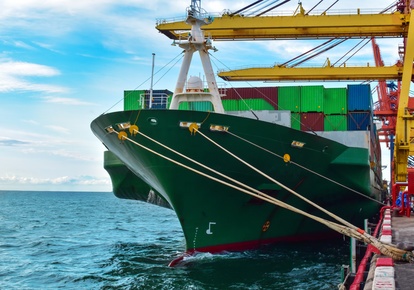The International Trade Blog Export Forms
Presenting a Full Set of Ocean Bills of Lading Under a Letter of Credit
On: August 7, 2017 | By:  Roy Becker |
4 min. read
Roy Becker |
4 min. read
 Letters of credit often call for export documents with interesting conditions, such as the presentation of a "full set of ocean bills of lading." In order to present a full set of documents, you must first know what comprises a full set.
Letters of credit often call for export documents with interesting conditions, such as the presentation of a "full set of ocean bills of lading." In order to present a full set of documents, you must first know what comprises a full set.
A Negotiable Letter of Credit
First, let’s understand the why, not just the what. The carrier can issue an ocean bill of lading in negotiable form. The document itself conveys title of the goods, which the carrier releases in exchange for surrender of the bill of lading. The carrier will release the goods only to the party who holds the original bill of lading.
The buyer benefits because he may sell the goods while still in transit. In that case, the seller endorses the bill of lading to the new buyer, who then can claim the goods directly from the carrier. Years ago, someone asked the obvious question: "If the bill of lading is lost, how does the rightful owner receive the goods?"
A reasonable solution requires the carrier to issue more than one original bill of lading for a shipment. Then, if one of the originals is lost, one or more additional original bills of lading would still exist, for surrender in exchange for the goods. The carrier releases the goods to the first party who appears with an original bill of lading. At that moment all other original bills of lading become null and void.
Of course, the importance of knowing the location of all original documents at all times reduces risk. If an original bill of lading were lost, stolen or fell into wrong hands, the carrier could release the merchandise to the wrong party, since whoever holds the negotiable bill of lading has rightful title to the goods.
The Language of an Ocean Bill of Lading
How does one know how many originals the shipping company has issued? The bill of lading itself will contain a statement like the following: "In witness whereof, the Master or Agent of said vessel has affirmed to three Bills of Lading all of this tenor and date, one of which being accomplished the others to stand void." This wording usually appears in the lower right hand corner box on the document.
"Three" indicates the number of identical original documents issued for that particular shipment. It should be noted that the carrier may, on occasion, issue originals in any other number, such as one, two, four, etc.
When the exporter delivers the goods to the carrier, the carrier issues the original documents and gives all of them to the exporter. The exporter then still has control and the title to the goods. If the exporter presents only two of three bills of lading to the bank, the bank will ask, "Where is the third original?" Since an unaccounted original document could find its way into the wrong hands, the exporter must deliver all the originals to the bank, to provide maximum protection for the buyer.
From that point on, the documents move in banking channels until they are ultimately received by the bank that issued the letter of credit. The issuing bank will honor the letter of credit and make payment only if they receive all originals as required by the terms of the letter of credit. This appropriately protects the interest of the buyer to ensure he has control of the title to the goods. It also protects the issuing bank in the event the buyer defaults. The bank may retain title to the goods as collateral to cover any losses.
In recent years a common practice emerged when importers started to request letters of credit payable against "2/3 set of bill of ladings." They also request a statement that the exporter has sent 1/3 set directly to the importer. This allows the importer to receive an original in advance of the bank. The buyer benefits because he can arrange customs clearance without waiting for the bank to receive and examine the documents.
Surprisingly, some exporters accept this condition. It allows the importer to receive the goods, a risk if the bank refuses to honor the documents for any reason. In that case, the exporter has surrendered title to the goods and has also lost the guarantee of payment.
One final interesting note: When an exporter presents all originals to its bank, that bank sends them to the issuing bank as already stated. For best protection, banks should send documents in different courier pouches at different time intervals.
In actual practice today, they send the documents in one package. If that package becomes lost, it has the same consequences as if they had only one document. This, of course, defeats the whole purpose of issuing multiple documents. Since such losses rarely occur, banks take the risk. Even if the package becomes lost, the shipping company can issue replacement documents, given the ease of issuing documents in today’s electronic environment.

About the Author: Roy Becker
Roy Becker was President of Roy Becker Seminars based in Centennial, Colorado. His company specialized in educating companies how to mitigate the financial risk of importing and exporting. Previous to starting the training company, Roy had over 30 years experience working in the international departments of several banks where he assisted many importers and exporters with the intricate banking needs associated with international trade.
Roy served as adjunct faculty in the International MBA programs at the University of Denver and University of Colorado in Denver. He conducted seminars at the World Trade Center Denver and The Center for Financial Training Western States, and was a guest lecturer at several Denver area Universities.
Roy retired in 2021.


